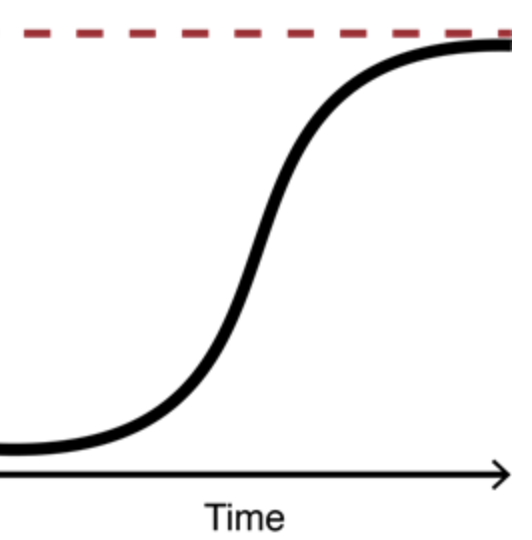Recently, I got a stunning investor update from a unicorn that grew 194% YoY last quarter. Pretty incredible at scale. But what’s more incredible the year prior, they were only growing 67%.
What changed? A new revenue team. One that knew the next stage, cold.
You see this time and time again in startups that are late to “top” their first set of VPs. CEOs that let their stretch VPs keep on stretching. You then see a bit of a slowdown, that slowly cascades. Really, what you tend to see when you keep a stretch VP too long in their current role is flat metrics. You’ll see:
- Bookings that stop increasing. For example, a great Stretch VP of Sales might get you to from $50k to $500k a month in new bookings. But then … that’s it. Month after month, it’s $500k month after month. I see this again and again.
- Churn that stops decreasing. A flag in a CS leader that may have reached their limits as a leader. Churn should keep coming down, at least a bit, until it’s top quartile at least.
- Leads and pipeline that flattens. A sign of a marketer that may have reached their limits. Especially, if the marketing spend keeps growing but the leads don’t.
- Feature velocity that stalls. An eng and product team that can’t get more features out per quarter.

When velocity stalls in a functional area, there will always be a lot of excuses, many of which will sound and even be correct. “My team’s too small.” “The competition raised a ton.” “My budget isn’t big enough.” “There’s too much technical debt.” Etc. etc.
The thing is, it’s the job of a VP to see these issues and excuses and push past them. To recruit the team and resources it takes not just to meet the plan this quarter, but the next one and the following quarters as well.
When you see bookings, leads, churn or feature velocity flatten — that’s a flag. You can give them a little more time. But if it goes one for more than a sales cycle, or a few releases, it’s time to bring in the VP for the next stage of growth.
That doesn’t mean firing the one that got you there. Not at all. It might in fact mean hiring an SVP or CRO above them.
But a VP whose metrics are flat for more than a quarter rarely, if ever, finds a way to reaccelerate growth later. Rarely.
You’ll see these plateaus roughly come around:
- $2m-$3m ARR for very early stretch hires. They can’t hack sales after this point and need to have build a small team under them that can also hit plan.
- $8m-$10m ARR for a classic Stretch VP. They often can’t hire beyond 3-4 good reps and get overwhelmed with constant recruiting to scale; and
- Then again often around $20m ARR when a VP has to start building a team of Directors and VPs under them. Many first-time VPs just can’t recruit great managers under them.
Be on the lookout. Back your team, but as CEO, it’s your job to know when it’s time to top them.


